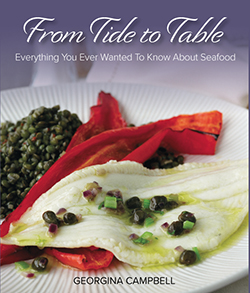Article THE JILLIAN BOLGER COLUMN
The Jillian Bolger Column


Although she is often that soldier herself, Food & Travel Writer JILLIAN BOLGER sometimes finds herself Critical of Critics
Last month I found myself reading reviews of a new restaurant in three different newspapers in a single weekend. It was as if their critics had made some sort of pact to allow a month’s bedding-in period before they all rushed in the door the same week.
The idea of waiting more than a few weeks to review a new opening seems positively quaint these days and predates the immediacy that the internet has brought to restaurant reviewing. The American Association of Food Journalists has guidelines for critics, recommending that, “reviewers should wait at least one month after the restaurant starts serving before visiting. These few weeks give the fledgling enterprise some time to get organised…”
It seems wonderfully democratic and fair (although their suggestion that critics pay two or more visits before writing their review is the kind of idealism we, in Ireland, can only dream of.) In truth, most Irish reviewers afford new places a 3-4 week bedding-in period – unless it’s a high profile opening.
Pichet had most critics in on their first week. Oliver Dunne’s Cleaver East only got to wait two days before a critic famously appeared; Enda McEvoy’s Loam, in Galway, had a critic in for dinner on opening night.
A week might seem unfair; two days ridiculous; opening night, positively daft. Even with quality training no one is going to be a star performer on their first week in any new job: neither teacher nor pharmacist nor waiter. In fairness to Oliver Dunne, Cleaver East acknowledged the potential to under-deliver by discounting diner’s food bills by 20% in their first month.
Soft openings are common practice in the business, though four weeks is an unusually long period. It won praise while highlighting the reality that, even with top chefs at the stove, missteps are likely to be made. It takes time for any new team to gel as a cohesive unit and soft openings allow for necessary tweaks to be made.
Arguments abound that if restaurants aren’t ready to be reviewed in those early days then perhaps they should offer discounts. In an industry with high opening costs and overheads this isn’t a realistic business model for most. Most diners hitting a restaurant on opening week are smart enough to know that there’s a risk. Many are there because they like being first to a hot new prospect, and often they’re happy to take the trade off.
While critics want to be first to report on that hot new opening, print media is fighting a losing battle with the internet. Certainly food lovers expect to read about the latest restaurant from their favourite newspaper, but the majority aren’t holding out for an opening week report card from a fledgling set-up.
The race to be first loses its value when critics end up assessing a diamond in the rough. The public can find that kind of commentary on the web, where amateur reviews are ten-a-penny. TripAdvisor, Menu Pages, Yelp and Zomato have turned everyone into a restaurant critic, with reviews frequently published while the diner is still sitting in the restaurant.
Print journalists simply can’t compete, nor, would I argue, do their readers want them to. Wait a few weeks, I say, and they’re likely to find themselves enjoying a superior experience.
The public is hungry to know about new places, and it wants to know about them fast, but there’s nothing stopping newspaper critics flagging new openings, with full reviews coming down the road. First impressions tend to last, especially those delivered by professional critics, so I’m calling for a little consideration. Three weeks seem fair - even two, perhaps - but can everyone please stop swooping in during opening week?
This article first appeared in Food & Wine Magazine and is reproduced with their kind permission. www.foodandwinemagazine.ie
----
Jillian Bolger is an award-winning editor and journalist specialising in food and travel writing. A member of the Irish Food Writers’ Guild and former editor of Food & Wine magazine (1999-2003) she writes for The Irish Independent, Image, Food & Wine Magazine, Image Interiors and The Herald and is editor of Irish Brides magazine. She has worked with Georgina Campbell’s ireland-guide.com since 2008 and is the Dublin Editor. Jillian has won several awards for her travel writing and holds an honours degree in the Arts. Her love of travel has seen her live in Australia, Sri Lanka, the USA and Germany. She lives in Dublin with her husband and three young children. Follow her on Twitter at @JillianBolger
The Jillian Bolger Column
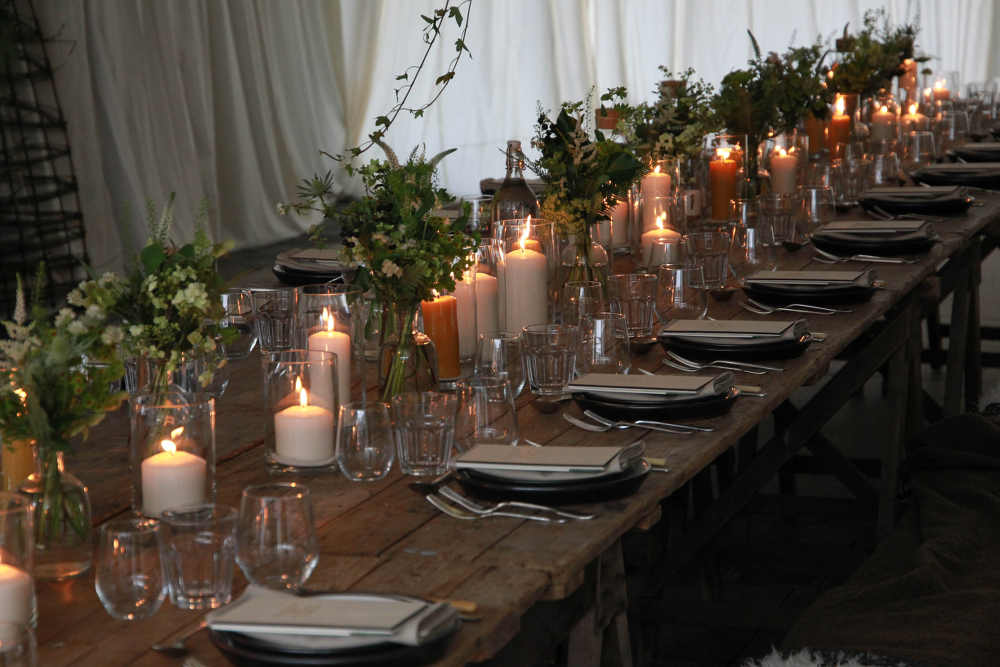
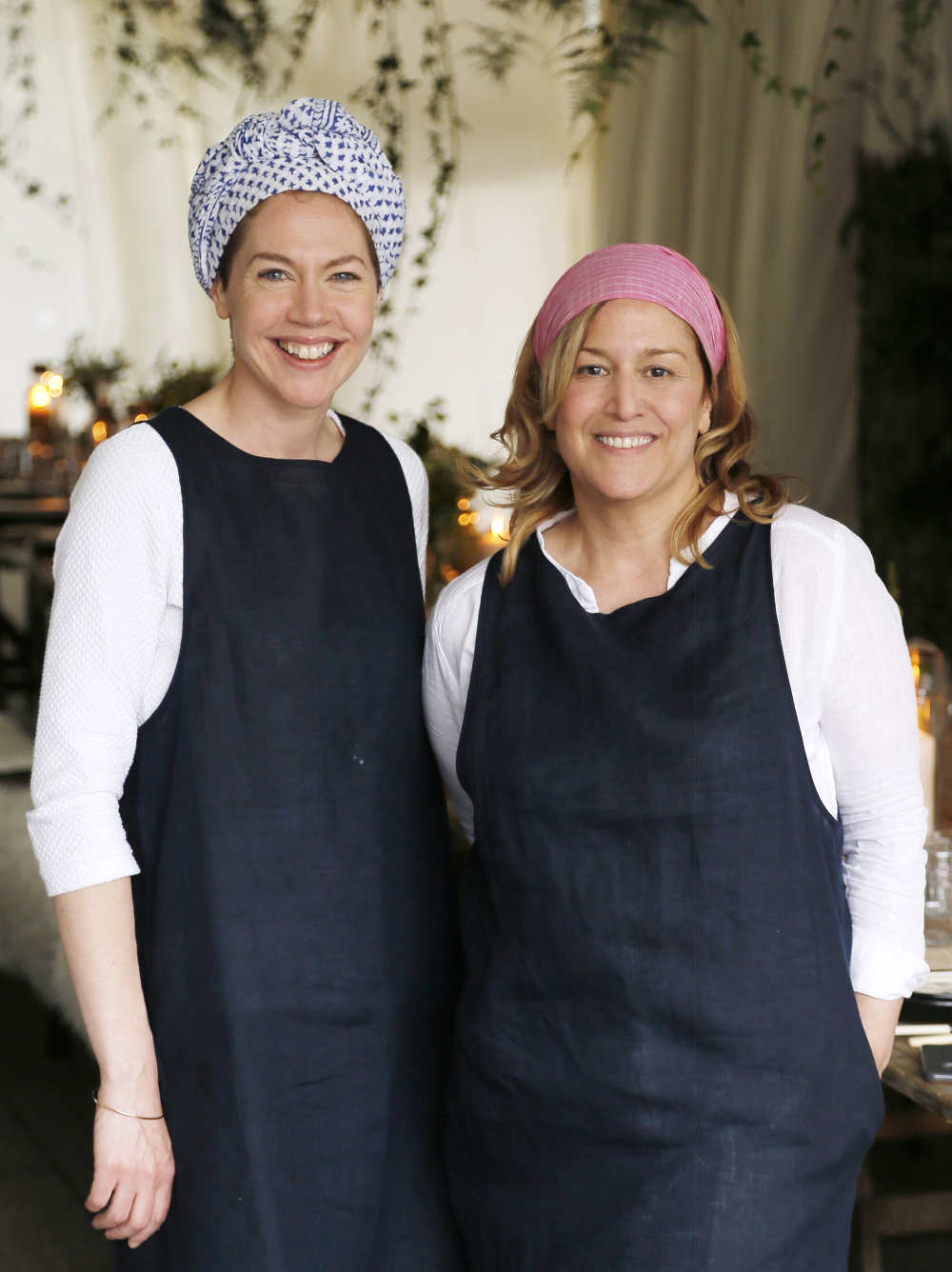 Food & Travel Writer JILLIAN BOLGER samples Lens & Larder’s pop-up Village Life dinner at Kildare Village - Summer’s most exclusive dinner party
Food & Travel Writer JILLIAN BOLGER samples Lens & Larder’s pop-up Village Life dinner at Kildare Village - Summer’s most exclusive dinner party
Garlands of trailing ivy hung above long trestle tables. Candles flickered beside bottles filled with wild flowers. Strings of fairy lights zigzagged overhead. A projection of dreamy Irish images illuminated the back wall and guests mingled drinking blush-coloured martinis. This was no ordinary dinner party, rather a media-preview of a two-night Lens & Larder pop-up dinner designed especially for Kildare Village as part on an exciting new initiative.
The creative Lens & Larder – award-winning chef, the Connemara-based Clíodhna Prendergast of BreakingEggs.com and American food writer and cook Imen McDonnell of Farmette.ie (pictured right) – were invited to create a tantalising menu of Irish produce for three truly special long-table dinners.
Before dining Justin Green of Ballyvolane House shook up delicious rhubarb martinis using his magnificent Bertha’s Revenge Irish milk gin and rhubarb syrup from Ballyvolane’s gardens. Then there were pristine oysters from Dungarvan Bay Oysters, shucked by oyster farmer extraordinaire, Jim Harty.

Once seated guests enjoyed a feast of local ingredients that included a stream of delicious starters: Plump fresh radishes with handmade pepper dillisk butter (which some guests had helped churn beforehand) and wedges of charred mackerel with tart pickled rhubarb.
Seaweed crackers smothered with Jerusalem artichoke and apple sauce were followed by The Market Brother’s creamy bone marrow and slices of Tartine sourdough. Incredible turf-smoked Atlantic salt-baked beetroot was paired with cooling St Tola goats cheese while pretty-in-pink pickled eggs from Connolly’s were topped with a dab of creamy Irish ricotta.
The final starter, Gubbeen chorizo braised in Craigies Original Ballyhook Flyer cider was served on bread like the best kind of hot dog you’ll eat in your life.
For mains Clíodhna appeared from the kitchen to plate and serve a magnificent whole turbot, that had been landed at Howth earlier that day. Bowls of minty new potatoes and salad leaves were passed around as everyone tucked into the wonderfully rustic course.
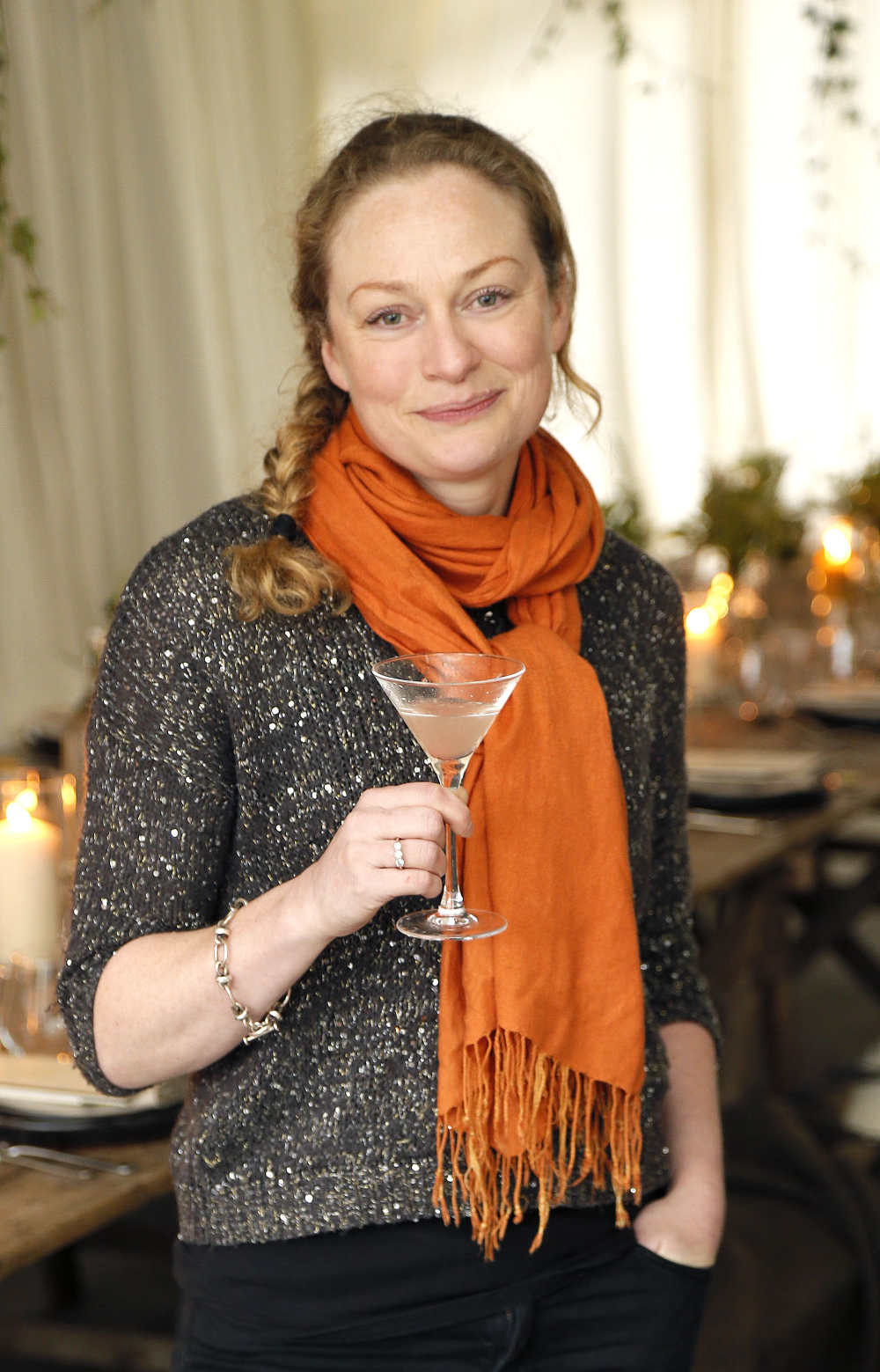
Supping on wine or craft cider – Craigies Dalliance 2013 – we moved onto a lovely interactive cheese course of Hegarty’s Cheddar, Cooleeney Camembert and creamy Cashel Blue, all served with Foods of Athenry crackers, Bretzel Bakery bread, honeycomb from Brookfield Farm and Connemara quince paste. Such a clever way to honour Ireland’s burgeoning cheese heritage.
To finish guests not only enjoyed Farmette’s legendary buttermilk tart with Toonsbridge ricotta and honey, but we all had the opportunity to whip up our own Irish coffees with Teeling’s Irish whiskey, a great new success story. A little guidance from food writer (and former waitress) Aoife Carrigy, ensured everyone’s cream stayed floating!
As menus go you’d be hard pressed to find another anywhere in the country offering such an abundance of excellent Irish produce. As evenings go, you’d find it harder to find a more unique or enjoyable celebration and as value goes there’s simply no hotter ticket in town.
Lens & Larder Village Life dinners run on Friday 24 and Saturday 25 June.
€45 for four courses with complimentary paired drinks including Bertha’s Revenge Small Batch Irish Milk Gin cocktail and a DIY Teeling’s Whiskey Irish coffee and free bus transfer to and from Kildare Village from Dublin city centre.
Dates for your diary
Saturday 25 June, 12pm: Meet the Makers butter-making workshop with Imen McDonnell of Farmette.ie (free)
Thursday 21 July, 6pm–8pm: Victoria Sponge and Spelt Scone baking class at Le Pain Quotidien, €60 includes drinks, nibbles and treats to take home(€60)
Tuesday 2 - Sunday 5 August, 11pm–12pm, kids cookie decorating classes at Le Pain Quotidien (free)
----

Jillian Bolger is an award-winning editor and journalist specialising in food and travel writing. A member of the Irish Food Writers’ Guild and former editor of Food & Wine magazine (1999-2003) she writes for The Irish Independent, Image, Food & Wine Magazine, Image Interiors and The Herald and is editor of Irish Brides magazine. She has worked with Georgina Campbell’s ireland-guide.com since 2008 and is the Dublin Editor. Jillian has won several awards for her travel writing and holds an honours degree in the Arts. Her love of travel has seen her live in Australia, Sri Lanka, the USA and Germany. She lives in Dublin with her husband and three young children. Follow her on Twitter at @JillianBolger
The Jillian Bolger Column

 Can someone please call time on kids’ menus, asks Food & Travel Writer JILLIAN BOLGER
Can someone please call time on kids’ menus, asks Food & Travel Writer JILLIAN BOLGER
When did we ever decide kids’ menus were a good idea? Long before chicken nuggets, or goujons, or tenders became a thing, apparently.
Research reveals they first appeared in US department store cafés and railway carriage in the 1920s, complete with cute images and bland, forgettable food offerings. Few children, aside from wealthy ones, ate out back then, but fast-forward to the 1950s when a new generation was introduced to fast food restaurants and, rather regrettably, the invention of the chicken nugget.
This change in eating habits not only marked a challenge to wholesome food but also dovetailed with the demise of dining together as a family. Up until the 1990s family restaurant outings were most often an occasional treat with most of us still sitting down to eat together at home.
No matter how mediocre a cook, most parents will endeavour to feed their kids a balanced diet, making the same meals for the adults and children. If we’re brought up this way at home why then do the majority of family-friendly restaurants insist on offering children lazy, limited fast-food style choices?
Let’s consider the message a standard kids’ menu of nuggets, pizza, burgers and chips communicates to children?
The short list of ‘kids’ favourites’ tells them that:
1) they’re not expected to try grown-up food
2) it’s OK to skip healthy foods like vegetables and fish
3) chicken nuggets, sausages and chips are what children should eat
I want to know when we stopped feeding children normal adult foods? And why?
It’s too simplistic to lay the blame at the door of chefs and restaurateurs, who are only offering what they know will be eaten. Put chicken stir-fry up against chicken nuggets and we know which dish will win out.
But let’s say chicken nuggets weren’t an option? Let’s say kids who love chicken had to choose the stir-fry? What’s the worst thing that will happen? They pick out the meat and leave the vegetables. The best thing? They’ll enjoy their meal and maybe even love the garlic and ginger flavours so much they’ll ask you to try to replicate it at home.
And while it’s true that not all burgers (or goujons, or even sausages) are created equal, do we really think children will freak out if they’re not handed a predictable list of dumbed-down options every time they eat out?
As adults who enjoy food we all know the pleasure of perusing a menu to see what unexpected offerings might take our fancy. So why are so many establishments denying that same surprise factor to their younger diners? Why have fruit and vegetables, spices and seafood been pushed out of the picture? I can’t be the only one whose kids enjoy these things.
There will always be burger joints and pizzerias for those times when you want a fuss-free experience but why aren’t more places treating children like the independent souls they are, and challenging the status quo?
Places like Beaufield Mews in Stillorgan have broken the mould, with a brilliant full-length kids’ menu offering things like cod and salmon fish cakes, beef curry and chicken Caesar salad. No. 5 Fenn’s Quay in Cork has gone one better, ditching the kids’ menu completely in favour of Kids Size Me child-size portions of everything on their imaginative menu.
This Kids Size Me initiative (from the Nutrition & Health Foundation and Restaurants Association of Ireland) is a step in the right direction but seems to works best when there aren’t any fast food options vying for kids attention.
The successful Cork restaurant is proof that children are adventurous when we allow them to be. Isn’t it time we dumped the dumbed-down menus and introduced our children to the joys of real food?
This article first appeared in Food & Wine Magazine and is reproduced with their kind permission. www.foodandwinemagazine.ie
----

Jillian Bolger is an award-winning editor and journalist specialising in food and travel writing. A member of the Irish Food Writers’ Guild and former editor of Food & Wine magazine (1999-2003) she writes for The Irish Independent, Image, Food & Wine Magazine, Image Interiors and The Herald and is editor of Irish Brides magazine. She has worked with Georgina Campbell’s ireland-guide.com since 2008 and is the Dublin Editor. Jillian has won several awards for her travel writing and holds an honours degree in the Arts. Her love of travel has seen her live in Australia, Sri Lanka, the USA and Germany. She lives in Dublin with her husband and three young children. Follow her on Twitter at @JillianBolger
The Jillian Bolger Column


This month Jillian has words to say about something we can all relate to - badly designed restaurants
Some days you have to wonder about the qualifications of restaurant designers? There are times I think some of them can’t have dined out in public at all. And if they have, are they actually paying attention to their surroundings?
Hands up anyone who has struggled to hear their date on a night out? Sure, all those clean lines, cement and wooden surfaces and high ceilings might look cool on a computer screen, but did anyone stop to think think how they would work together as a public space?
Factor in diners’ voices, music and staff moving about and that’s a lot of sound waves bouncing off innumerable hard surfaces. Introduce glassware and cutlery, chairs being moved on hard floors and doors opening and you’ve the recipe for one cacophonous dining experience.
Poor acoustics are bad enough, but spare a thought for those of us with bad eyesight. When I go out for dinner I don’t want to feel like I’m sitting in a night club. I get that low lighting is key to setting a mood in a public space, but there’s a fine line between being able to read a menu and wondering if it’s maybe time for laser surgery. I’ve lost count of how many times I’ve swiped the tea light and almost set fire to the menu while trying to decipher the fine print on the à la carte.
Comfort is key to a pleasant meal out, but I’m certain a large amount of restaurant designers think aesthetics first, and practicality second. How many times have you sat down on an inviting looking banquette only to realise that there’s enough room behind you for a front row prop to snuggle in?
Those deep spaces seem designed to accommodate a grizzly bear, not a human being, and you end up either leaning back at a 45-degree angle or sitting forward eyeballing your companion’s dining chair with envy for the duration of the meal. (Unless they’ve landed the designers’ other favourite: a cool-looking-but-equally-uncomfortable-seat that no-one should be expected to spend time on, even as a punishment.)
When you’re likely to be sitting at your table for several hours it seems ludicrous that comfort isn’t a consideration. Deep banquettes aside, what’s the deal with bar stools? Sure, they might only be temporary seating while waiting for your table to become free, but that doesn’t mean you should need a step ladder to summit them.
And if the vertically-challenged amongst us do manage to get onto them without making a complete scene, how many of them are too tall to pull under the bar counter? Didn’t anyone think of this when ordering them? I’m sure someone thought to measure the height of the bar versus the height of the stool, but no-one seems to have measured the stool’s height with an actual human sitting on it.
Anyone else fed-up dressing for all seasons before heading out to a new restaurant? I can’t be the only person who likes feeling warm when I’m enjoying my dinner, yet so many places struggle to provide a pleasing temperature.
Some dining rooms deliver instant Arctic-inspired exposure each time the door swings open, others a permanent chill thanks to over-zealous air conditioning. Surely decent heating, good ventilation and proper insulation make sense in our cool climate?
In the interest of fairness, I must acknowledge that not all restaurant designers are to blame. Many are simply following the wishes of the aesthetic-inspired restaurant owner that has hired them.
If you happen to be a would-be restaurateur reading this, before spending a cent, could you please visit the most comfortable restaurant you know and figure out how they got it so right? In this business its takes more than good food to make a recipe for success.
This article first appeared in Food & Wine Magazine and is reproduced with their kind permission. www.foodandwinemagazine.ie
----

Jillian Bolger is an award-winning editor and journalist specialising in food and travel writing. A member of the Irish Food Writers’ Guild and former editor of Food & Wine magazine (1999-2003) she writes for The Irish Independent, Image, Food & Wine Magazine, Image Interiors and The Herald and is editor of Irish Brides magazine. She has worked with Georgina Campbell’s ireland-guide.com since 2008 and is the Dublin Editor. Jillian has won several awards for her travel writing and holds an honours degree in the Arts. Her love of travel has seen her live in Australia, Sri Lanka, the USA and Germany. She lives in Dublin with her husband and three young children. Follow her on Twitter at @JillianBolger
The Jillian Bolger Column - Mind Your Language


On the BBC’s Room 101, host Frank Skinner invites three guests each week to nominate their pet hates, things they’d most like to see banished to Room 101 forever. The chosen items usually range from the mundane to the obscure, but are all things that drive their nominator crazy.
Should I ever find myself before Mr Skinner I won’t need to think twice about what I’d most like to see consigned to oblivion. For me it’s got to be all the pretentious, nonsensical language that seems to have found its way into the world of restaurants and cookbooks.
I could write a separate column on the ‘clean eating’ movement, that holier-than-thou sub-set of health obsessiveness and nutrition nerds who espouse the benefits of sugar-free living from their preachy blogs. Every second cookbook to hit my desk seems to have been penned by another member of the almond butter brigade, banging on about how clean eating and coconut oil have changed their lives.
Now, I like healthy food as much as the next blogger, and understand that cutting out some allergens can help with certain health issues, but I draw the line at ‘healthy brownies.’ Never before have two words been more at odds. Replacing sugar, butter, flour, eggs and chocolate with peanut butter, coconut oil, honey, dates, nuts and, eh, chocolate doesn’t exactly sound much healthier to me. Clean eating! Seriously?
The whole clean movement is also responsible for the (unwelcome) introduction of ‘cheat meals’ and ‘guilt-free’ baking into our lexicon. Food is food, and while we all know that pizza and chocolate cake aren’t healthy every day of the week, do we really need judgmental references to keep us focused? Linking emotive terms like cheat and guilt to food consumption turns eating into a dangerous game of control and one-upmanship.
On the plus side, the health brigade may be the reason we’re seeing more delicious avocados on menus, but can we please banish the nonsense prefix of ‘smashed’? Last time I checked I mashed avocado, not smashed it, though, clearly this doesn’t have the same hipster appeal. And while we’re talking nonsense terminology, can we discuss the many other words that have been hijacked and bastardised by the menu-writers of the world?
Foraged, for example, means picked by the kitchen crew in the wild, not something that came in with the vegetable delivery this morning. Then there’s the vagueness of homemade, which should always set off alarm bells on menus. If something is described as homemade does that mean that everything else they’re serving has been bought in? (If you think homemade’s bad enough don’t even get me started on house made.)
Anyone have any idea what a gourmet sandwich is? A gourmet tart? According to the Oxford English Dictionary a gourmet is a connoisseur of good food, the adjective meaning ‘Of a standard suitable for a gourmet’. Frequently spotted prefixing various dishes, by applying it to only one menu item surely implies that everything else is of a lesser quality. Hardly a smart move for anyone in the restaurant business.
And should Mr Skinner allow me to banish only one word to Room 101’s confines then I’ll bypass the guilt-free cookies, the healthy cakes and smashed avocados and head straight for foodie. Once useful in describing a group of people interested in good food, it’s been used to ubiquity, morphing into little more than a pompous, jumped-up middle class label for those of us who simply love good food.
I doubt there’s a good for a replacement word either; some clever clogs journalist would have come up with one long ago if there were…
This article first appeared in Food & Wine Magazine and is reproduced with their kind permission. www.foodandwinemagazine.ie
----

Jillian Bolger is an award-winning editor and journalist specialising in food and travel writing. A member of the Irish Food Writers’ Guild and former editor of Food & Wine magazine (1999-2003) she writes for The Irish Independent, Image, Food & Wine Magazine, Image Interiors and The Herald and is editor of Irish Brides magazine. She has worked with Georgina Campbell’s ireland-guide.com since 2008 and is the Dublin Editor. Jillian has won several awards for her travel writing and holds an honours degree in the Arts. Her love of travel has seen her live in Australia, Sri Lanka, the USA and Germany. She lives in Dublin with her husband and three young children. Follow her on Twitter at @JillianBolger
The Jillian Bolger Column - Cake Sales
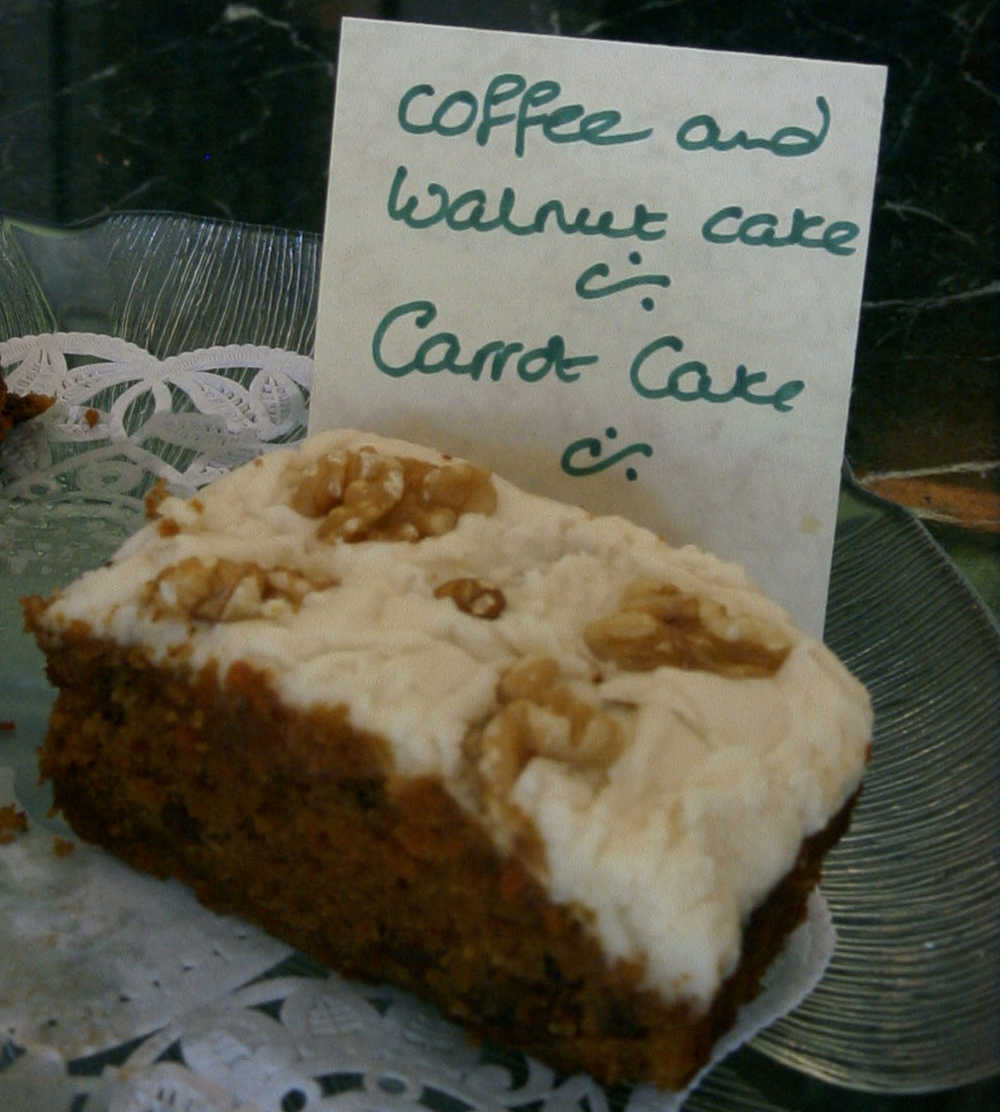
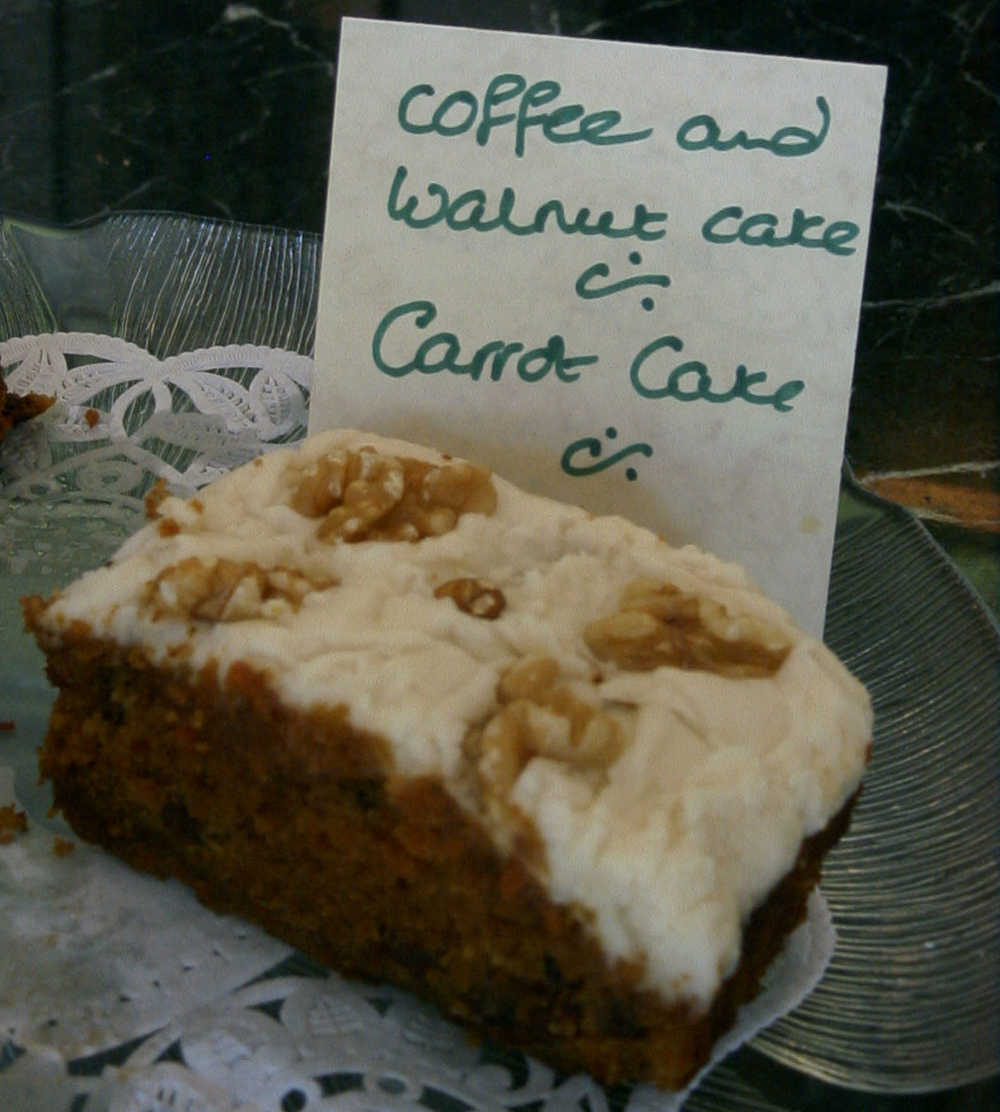
All the fuss about The Great British Bake Off leaving the BBC has got Food & Travel Writer JILLIAN BOLGER thinking about CAKE SALES - and she is on a (slightly tongue in cheek) mission to raise standards at school halls around the country.
Cake sale etiquette
Cake sales are part and parcel of every parent’s life. But did you know there’s a whole world of etiquette around the ubiquitous fundraiser?
Some parents dread the event, fearing their inadequacy in the kitchen will be exposed; others revel in the opportunity to show off their baking prowess; while a third group prefers to flash the cash at the event and simply eat the spoils. If you’re not sure which category is your natural home, here’s a little help navigating the world of cake sale etiquette.
If you wouldn’t eat it then don’t expect others to
Know that baking isn’t your greatest skill? Seen the kids groan over your homemade scones? Forever overcooking those cookies? Maybe it’s time to man up and admit that baking isn’t for you. Rather than soldier on, determined to present the school committee with a box of (inedible) buns, please do the cake lovers of the world a favour and accept defeat. Instead, vow to rock up with empty Tupperware, splurge on someone else’s accomplishments and leave with a full box and your head held high. Not only have you supported the cause generously but you haven’t ruined anyone else’s cake sale experience. Could you really sleep at night knowing Jack or Mary’s mum had served up your hideous offerings at their carefully planned coffee morning?
Don’t use cheap chocolate
There’s nothing’s worse than tucking into a delicious looking chocolate square or piece of rocky road only to discover that the ‘chocolate’ is that awful fake, flavoured stuff. The kids probably won’t notice, but they’re not necessarily your target market. Plenty of adults enjoy buying cake sale treats, so disappointment should not be on the menu. Cheap or fake cooking chocolate should be outlawed, but, sadly, there are box loads of the stuff clogging up the baking aisles of supermarkets around Ireland. Simply put, life is too short for bad cakes. Real bakers out there may want to hunt you down once they realise how they’ve been short changed by your cheapskate trickery. If you can’t be bothered splurging a few cent more on the good, real stuff, then please revert to point one, above.
It’s OK to buy back your own cake
Convinced you make the tastiest brownies in the world? Reckon you’re the best baker in the school? (Cocky? Yes, but perhaps you are.) Resent handing over your handy work to risk buying some anonymous cake that could, possibly, turn out to be driest, most awful thing imaginable? Cake sale etiquette states that it’s perfectly acceptable to present your masterpiece to the committee (so they can acknowledge what a dedicated and talented parent you are) then flounce in when the sale kicks off and buy your cake straight back. It may be audacious, but why mess with perfection? You’ve baked, you’ve bought and you’ve now got the best cake in the world to enjoy later. Winners all round.
It’s not OK to sit out the whole thing
Cake sales wouldn’t succeed if parents didn’t participate on some level. Even if you can’t/won’t/don’t bake and can’t/won’t/don’t enjoy eating cakes, none is an excuse to ignore the fundraiser. Offer up your services as a volunteer on the day, or else send junior off to school with a cash donation. Someone in your house is bound to enjoy the spoils, even if it isn’t you.
This article first appeared in Food & Wine Magazine and is reproduced with their kind permission. www.foodandwinemagazine.ie
----

Jillian Bolger is an award-winning editor and journalist specialising in food and travel writing. A member of the Irish Food Writers’ Guild and former editor of Food & Wine magazine (1999-2003) she writes for The Irish Independent, Image, Food & Wine Magazine, Image Interiors and The Herald and is editor of Irish Brides magazine. She has worked with Georgina Campbell’s ireland-guide.com since 2008 and is the Dublin Editor. Jillian has won several awards for her travel writing and holds an honours degree in the Arts. Her love of travel has seen her live in Australia, Sri Lanka, the USA and Germany. She lives in Dublin with her husband and three young children. Follow her on Twitter at @JillianBolger
The Jillian Bolger Column


Disappointed with the service at a famous Irish restaurant, JILLIAN BOLGER says proprietors need to realise that investing in front-of-house training is investing in a satisfied customer.
Finally November rolled around, and my booking for a hot Irish restaurant I’d never eaten in. Having won a significant international accolade, along with countless Irish awards, I came hungry and with high expectations.
As expected, the cooking was superb. Each dish was beautifully assembled with pitch-perfect flavours and technical brilliance. Everything looked so pretty and tasted wonderful. Yet, despite the fact that four of us at the table were equally impressed with our food, we left the restaurant feeling overwhelmingly disappointed.
The staff were nothing short of charming, but this did little to disguise the fact that no time or effort had gone into their training. The service was so poor it was farcical.
After ordering a bottle of Picpoul to accompany our starters, we asked to keep the wine list so we could choose a red. As no one came near us after this we only succeeded in ordering the wine to drink with our main courses after our mains had been brought to the table.
The red was promptly delivered and poured and while one staff member did come to enquire how our food was, we saw no one else until we had finished eating. No one poured any drinks nor noticed when we had run out and wanted to order more.
When we did manage to attract attention to order a second bottle of red, I sampled and approved it in my empty glass. Once I’d given the nod I was amazed to see it being poured into glasses with wine already in them. A top-up, if you will, of a €50 wine.
During dessert our table had run out of water, but we couldn’t find a single staff member to order more. After ten minutes of empty glasses – and looking around fruitlessly to get anyone’s attention – I left our table and walked to the bar to request another bottle of mineral water. This was to be the first of two trips to the bar to get service during our meal.
The sparkling water was promptly delivered and poured then the waitress walked away. Not only had she ignored our empty wine glasses, which could have been topped up, but also the four dirty dessert plates sitting in front of us. These remained on our table for ten minutes.
After dessert we were offered coffees. “I’d like an espresso, please,” one friend asked. “Sorry, we only serve filter coffee,” came the reply. Quite a surprise for a fine dining establishment, but one that left a friend unimpressed.
Deciding to skip coffees we agreed to ask for the bill. Except there was no one to ask. Cue trip number two to the bar to request it.
When you’re paying around €100 a head for dinner I wonder if it’s wrong to expect your wine to be poured for you, your plates to be cleared and your water to be topped up when you run out? Is it wrong to expect staff to understand wine etiquette?
Despite the delicious food I can’t help feeling it was more than us who were let down by front-of-house. What about the brigade of talented chefs cooking their hearts out in the kitchen?
Why make such an effort only to have that culinary brilliance undermined by untrained staff?
Brilliant food needs brilliant service, irrespective of whether that’s in a fine dining establishment or casual neighbourhood bistro, and proprietors need to realise that investing in front-of-house training is investing in a satisfied customer.
----

Jillian Bolger is an award-winning editor and journalist specialising in food and travel writing. A member of the Irish Food Writers’ Guild and former editor of Food & Wine magazine (1999-2003) she writes for The Irish Independent, Image, Food & Wine Magazine, Image Interiors and The Herald and is editor of Irish Brides magazine. She has worked with Georgina Campbell’s ireland-guide.com since 2008 and is the Dublin Editor. Jillian has won several awards for her travel writing and holds an honours degree in the Arts. Her love of travel has seen her live in Australia, Sri Lanka, the USA and Germany. She lives in Dublin with her husband and three young children. Follow her on Twitter at @JillianBolger
The Jillian Bolger Column


BAD SERVICE - Food & Travel Writer JILLIAN BOLGER has got the bit between her teeth on this one, and she’s not letting go. And she’s dead right.
In last month’s ezine I wrote about the especially bad service I experienced in a celebrated Irish restaurant. In my column, which you can read here I noted how a lack of training of the floor staff had ruined what had been a night of outstanding cooking.
Several readers contacted the Guide afterwards to ask why I hadn’t named the restaurant in question. One went so far as to say that ‘by not naming the restaurant your review is meaningless’. Another suggested I should have named the place as they ‘deserve to know how bad the service was.’
On the night in question, as we were leaving, I commented to the staff about how disappointing the service had been and how we’d felt very neglected at our table throughout the night (a table that was in the centre of the dining room, no less, and close to the chef’s pass – not one that was hidden away in the corner of a room.) The staff who had served us apologised profusely, agreeing that service hadn’t been up to scratch and explaining that the manager was away on holidays.
Of course anyone who has ever worked in a restaurant will know that the manager’s presence should not be the linchpin that holds the service together. The best manager in the world can’t save a restaurant where the floor staff haven’t had proper training.
Clearing plates in a timely fashion strikes me as a fundamental of front-of-house training, ahead of wine etiquette and menu knowledge. Ditto, topping up water glasses and noting when bottles have run out. If a waiter doesn’t have the instinct to get these basics right then they’re probably not cut out for a job in a café, never mind a fine dining restaurant.
One reader asked if I was, “afraid to make (my) review visible to the owners?” and the answer is no. I addressed the poor service on the night with front-of-house, but have no idea if my comments were ever passed on to the chef-proprietor. I can’t help thinking they weren’t (after all, who wants to land themselves in trouble with the boss?) but I also believe the owner has to accept responsibility for the fiasco out-front.
It was clear the floor staff hadn’t had proper training and no manager, present or otherwise, was going to be able to change that. However, I had a genuine reason for omitting the restaurant’s name. Had I called them out in print, my story would just have become a comment on one establishment’s failings. The focus would simply have stopped at their door and become all about them.
By not naming the restaurant I hoped to generate discussion around the wider problem of poor service in the industry. How many restaurateurs read the piece and could say with absolute confidence that this scenario would never happen under their roof? How many chefs read the piece and wondered if their hard work is being undermined in the dining room by careless service and undertrained staff?
While Ireland has more good restaurants than ever before, many with impressive standards, it’s safe to say that, in The Guide’s experience, the quality of cooking in Ireland is not matched by the quality of service. Good food undermined by poor front-of-house behaviour is a frequent theme in our assessors’ reports from around the country and the reason many restaurants fail.
The bottom line is that great cooking isn’t enough to make a diner come back for more. Floor staff are the face of a restaurant, and the connection between the customer and the kitchen. Get it wrong and you may not get a second chance to impress.
Just like any industry, investing in staff training is an investment in a business’s success. The public is no longer happy these days just to have good food – we want thoughtful service too – and it’s time more restaurateurs took their heads out of the sand and looked at the bigger picture.
--
Jillian Bolger is an award-winning editor and journalist specialising in food and travel writing. A member of the Irish Food Writers’ Guild and former editor of Food & Wine magazine (1999-2003,) she writes for The Irish Independent, Image, Food & Wine Magazine, Image Interiors and The Herald and is editor of Irish Brides magazine. She has worked with Georgina Campbell’s ireland-guide.com since 2008 years and is the Dublin Editor. Jillian has won several awards for her travel writing and holds an honours degree in the Arts. Her love of travel has seen her live in Australia, Sri Lanka, the USA and Germany. She lives in Dublin with her husband and three young children. Follow her on Twitter at @JillianBolger
The Jillian Bolger Column - The Rise and Rise of the Irish G&T
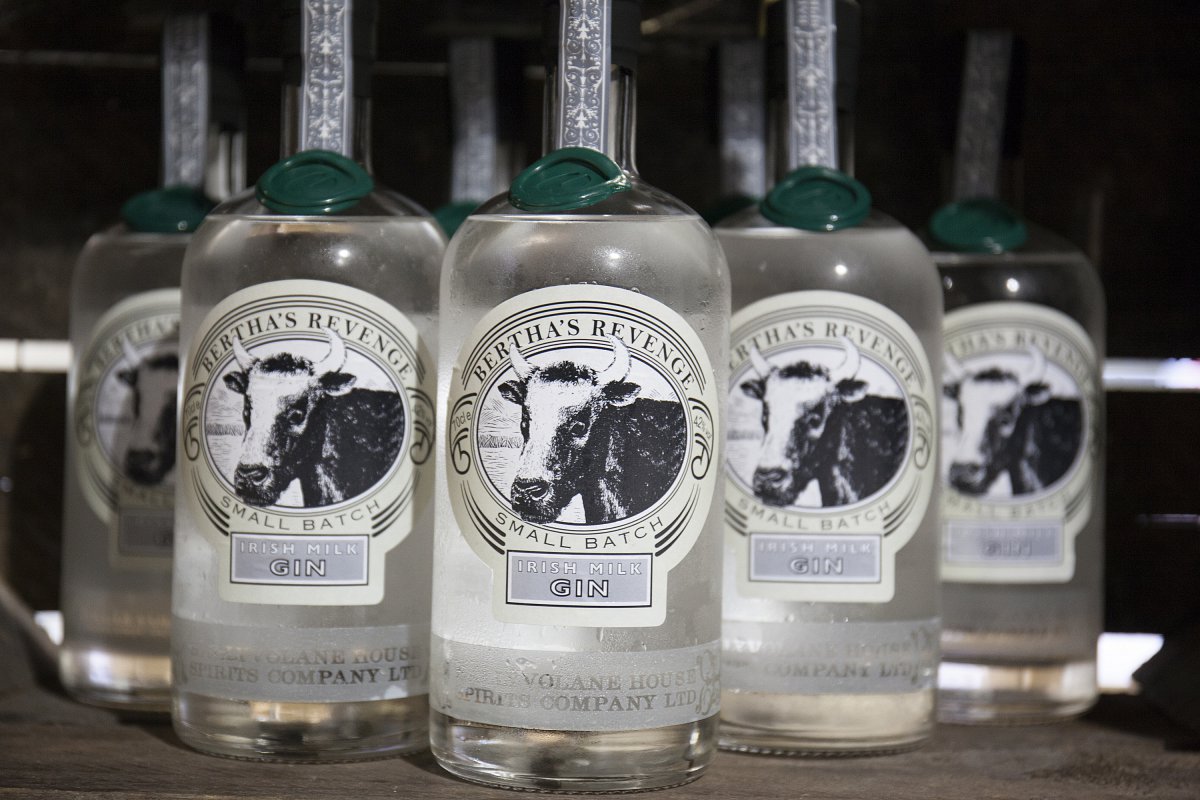

The first time I ever tasted a Hendrick’s gin and tonic was in Chapter One. Former manager, Declan Maxwell, introduced me to the cucumber-enhanced aperitif one evening several years ago, and with that it became my aperitif of choice for visits here.
This Christmas I returned, requesting, as usual, a Hendrick’s and tonic only to be told, apologetically, by my waiter that Chapter One now only serves Irish gin. Rather than disappointment I reacted with absolute delight! This would have been unthinkable ten years ago when few could have predicted how successful Ireland’s foray into gin production would become.
We haven’t just dipped our toes into gin; a new breed of Irish distillers has embraced the industry with such nous and innovation that Ireland now offers over 40 different gin styles from distilleries across the four provinces. The scene is so vibrant that what many regard as the top restaurant in the country can now offer diners a specialist Irish gin menu.
Although Chapter One’s drinks menu hasn’t been updated online to reflect the changes, the five quality Irish gins they now serve are Blackwater, Gun Powder, Bertha’s Revenge, Shortcross, and the Single Estate Kilkenny Gin made by Highbank Organic Orchards – and they also offer Poacher’s Well Wexford tonic water. With spirits this good no one’s going to come looking for a Tanqueray or Hendrick’s.
Last month I dined in Wilde, the newly revamped restaurant in the Westbury Hotel. Now you’d expect a five-star property to offer an extensive selection of pre-dinner drinks, but I wasn’t prepared for the rather wonderful spectacle of a full page in the drinks menu dedicated to ‘Signature G&Ts’. Alongside Hendrick’s, Beefeater, Martin Miler’s and Malfy from Italy, there is an incredible seven Irish gins on the menu. That’s seven out of eleven local, and relatively new, spirits as good as anything else being produced worldwide.
What I loved most about this list is that the Westbury’s mixologists haven’t just stuck every gin with the same tonic and garnish. Instead, they’ve matched each gin’s unique flavourings to specific botanicals, fruits and tonics. There are no shortcuts here, no one-size-fits-all.
That means that your Glendalough Wild Botanical Seasonal gin is served with elderflower tonic, red berries and lime peel. Dingle Gin has been paired with Fentimans Botanical tonic, star anise, lime and mint. Shortcross Gin from Co Down comes with Thomas Henry Indian tonic and a garnish of green apple and blackberries.
Jawbox Gin from Belfast, Bertha’s Revenge from Cork, Blackwater Gin from Waterford and Gunpowder Irish Gin from Leitrim also get the bespoke G&T treatment, with everything from grapefruit peel to cherries and basil making the cut. Tonics range from 1724 to Fever Tree and Poacher’s Well to Thomas Henry Cherry Blossom tonic.
Aside from how delicious this all sounds, it’s a development worth celebrating. With more of us drinking gin than ever before we’re now getting the chance to sample different styles of the spirit as our thirst for something new also grows. Alongside high-end establishments, it’s reassuring to see mid-range restaurants like Coppinger Row and Drury Buildings adding good selections of Irish gins to their bar menus.
You’d expect to find great choice in places like The Gin Palace and JT Pim’s Gin Rummy, but restaurants that meet demand deserve serious praise. In order to support the rapidly growing industry we need to start asking for gins by their name when we’re out. By requesting an Irish gin we can let restaurateurs and bartenders know that the secret is out and we’re no longer happy with the limited offerings of old.
People rarely order a whiskey without specifying the distiller and, if they really know their stuff, the year. Imagine a world where we all ordered gin by name and knew as much about our favourite type as we do our favourite kind of wine.
--

Jillian Bolger is an award-winning editor and journalist specialising in food and travel writing. A member of the Irish Food Writers’ Guild and former editor of Food & Wine magazine (1999-2003,) she writes for The Irish Independent, Image, Food & Wine Magazine, Image Interiors and The Herald and is editor of Irish Brides magazine. She has worked with Georgina Campbell’s ireland-guide.com since 2008 years and is the Dublin Editor. Jillian has won several awards for her travel writing and holds an honours degree in the Arts. Her love of travel has seen her live in Australia, Sri Lanka, the USA and Germany. She lives in Dublin with her husband and three young children. Follow her on Twitter at @JillianBolger
The Jillian Bolger Column - Pastry Chefs
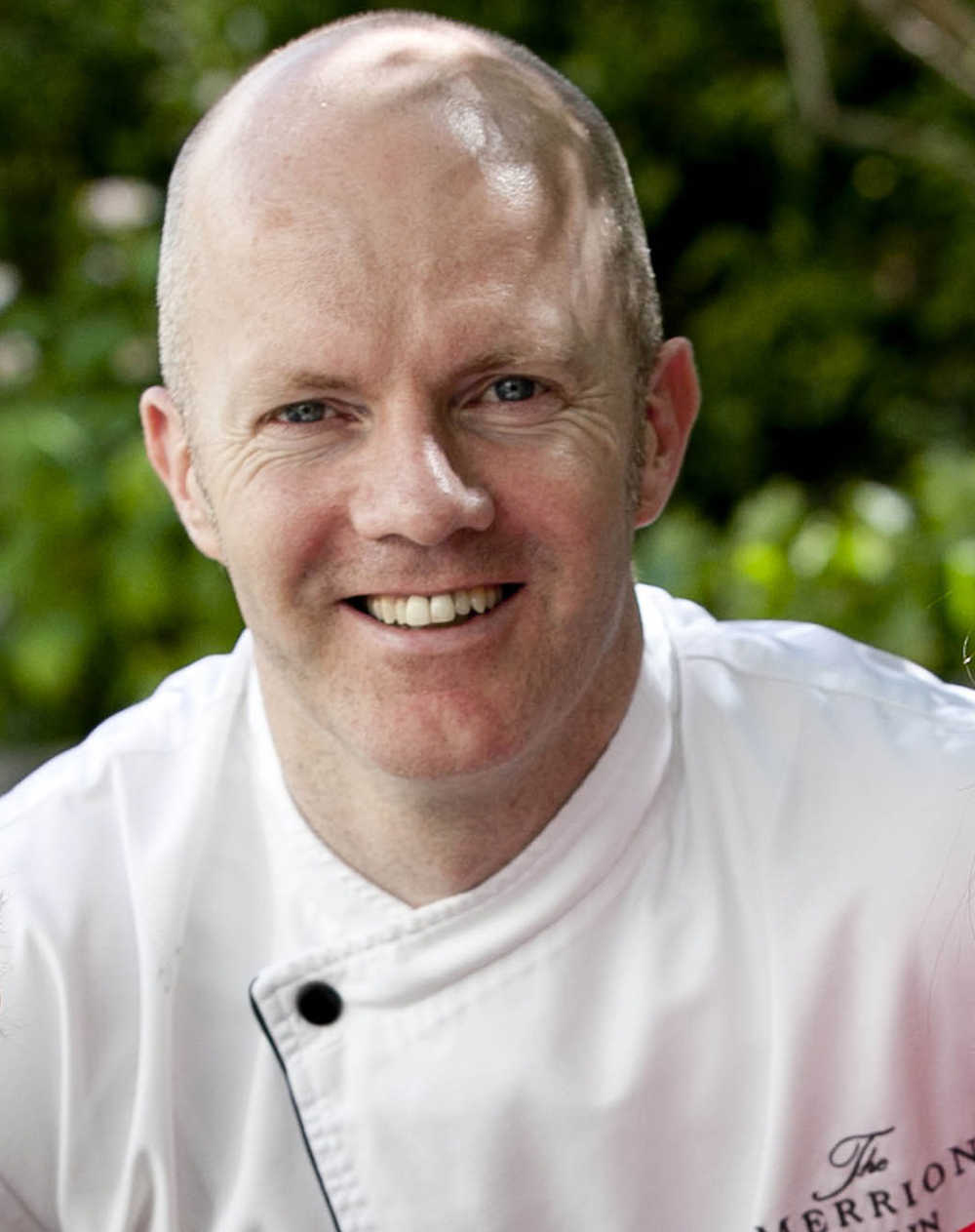
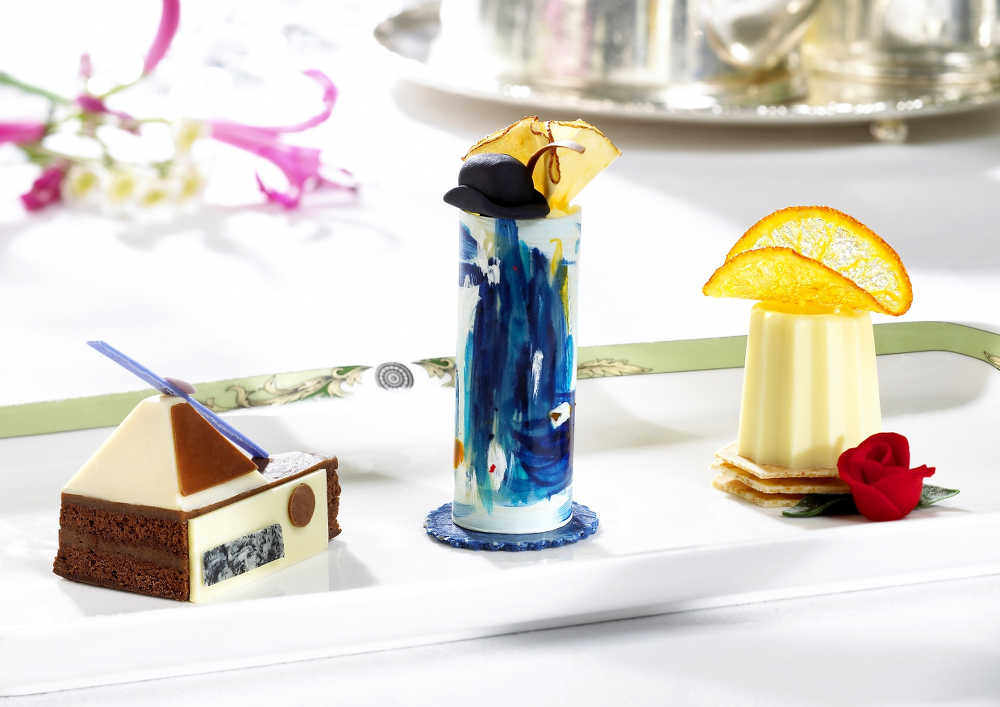
JILLIAN BOLGER wonders why we so rarely see the work of highly skilled pastry chefs credited by including their names on menus
Over many years as a food writer I’ve always been struck at how many of us rank our dessert as the highlight of a meal. It’s not always those of us with the sweetest teeth either. That sensational citron tart, that amazing crème brûlée, that luscious chocolate fondant: they’re often the thing we remember most about dining out.
Yet how many of know the name of a single pastry chef?
The reality is that while top class pastry chefs create incredible desserts every day very few of us have a notion whose jaw-dropping treats we are tucking into. And what about the pastry chefs whose exquisite bite-sized confections delight hundreds of guests at afternoon tea in luxury hotels each day? Does anyone know who they are and do we even care?
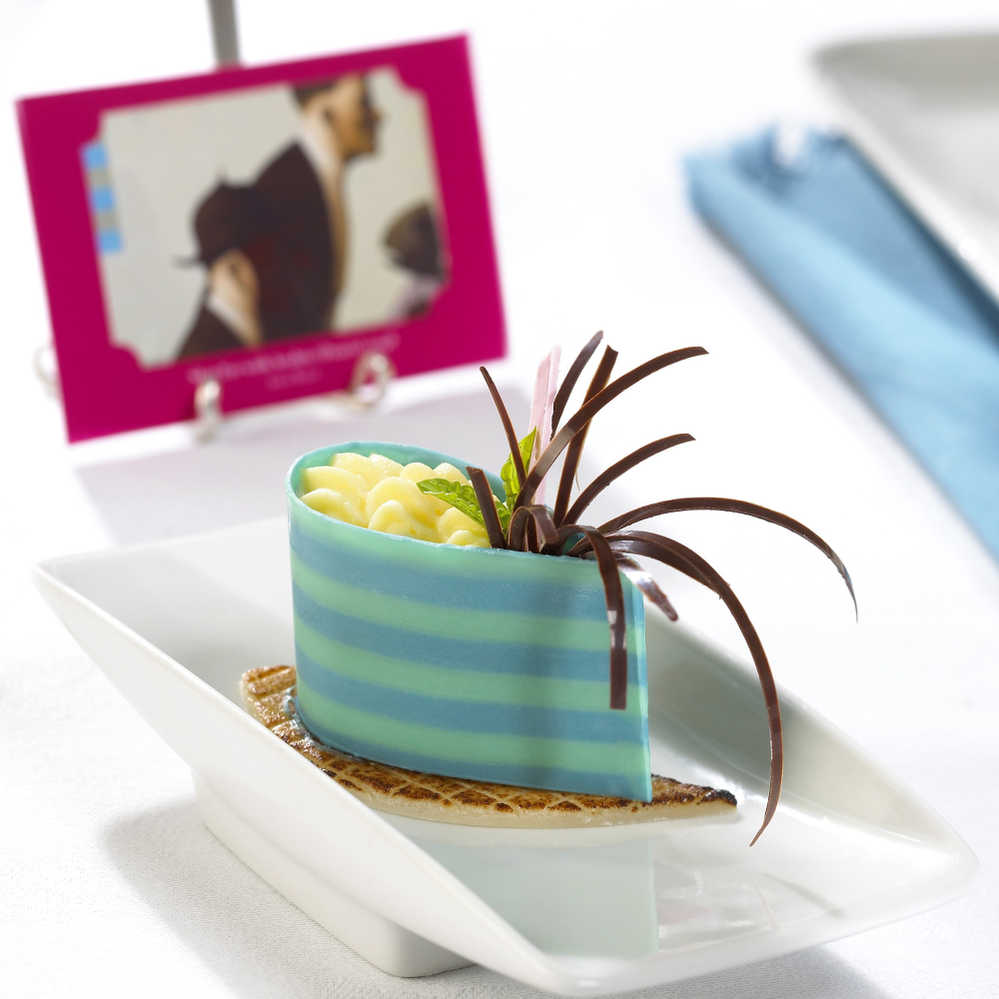
TV chef Gary O’Hanlon, of The Restaurant, always names his pastry chefs on the menu at VM Restaurant at Viewmount House, where he cooks, but this practice isn’t commonplace. Colleagues like restaurant critic Tom Doorley believe good pastry chefs are ‘unsung heroes’, while Katy McGuinness, restaurant critic at The Irish Independent shares my opinion that these ‘neglected’ chefs should be namechecked on menus.
But what do the pastry chefs think?
Katie McLoughlin, executive pastry chef at The Shelbourne Hotel, isn’t fussed about making a name for herself, but does admit that a little recognition might be nice.
She has been at The Shelbourne for ten years and manages a team of eight in the pastry section. The hotel is celebrated for its afternoon tea, something she and her team can take much credit for. “When we started out we were maybe doing 20 covers at afternoon tea in The Lord Mayor’s Lounge. Now, on a Saturday, we sell out and do a minimum of 140. Some Saturdays we’ll serve 170 people.”
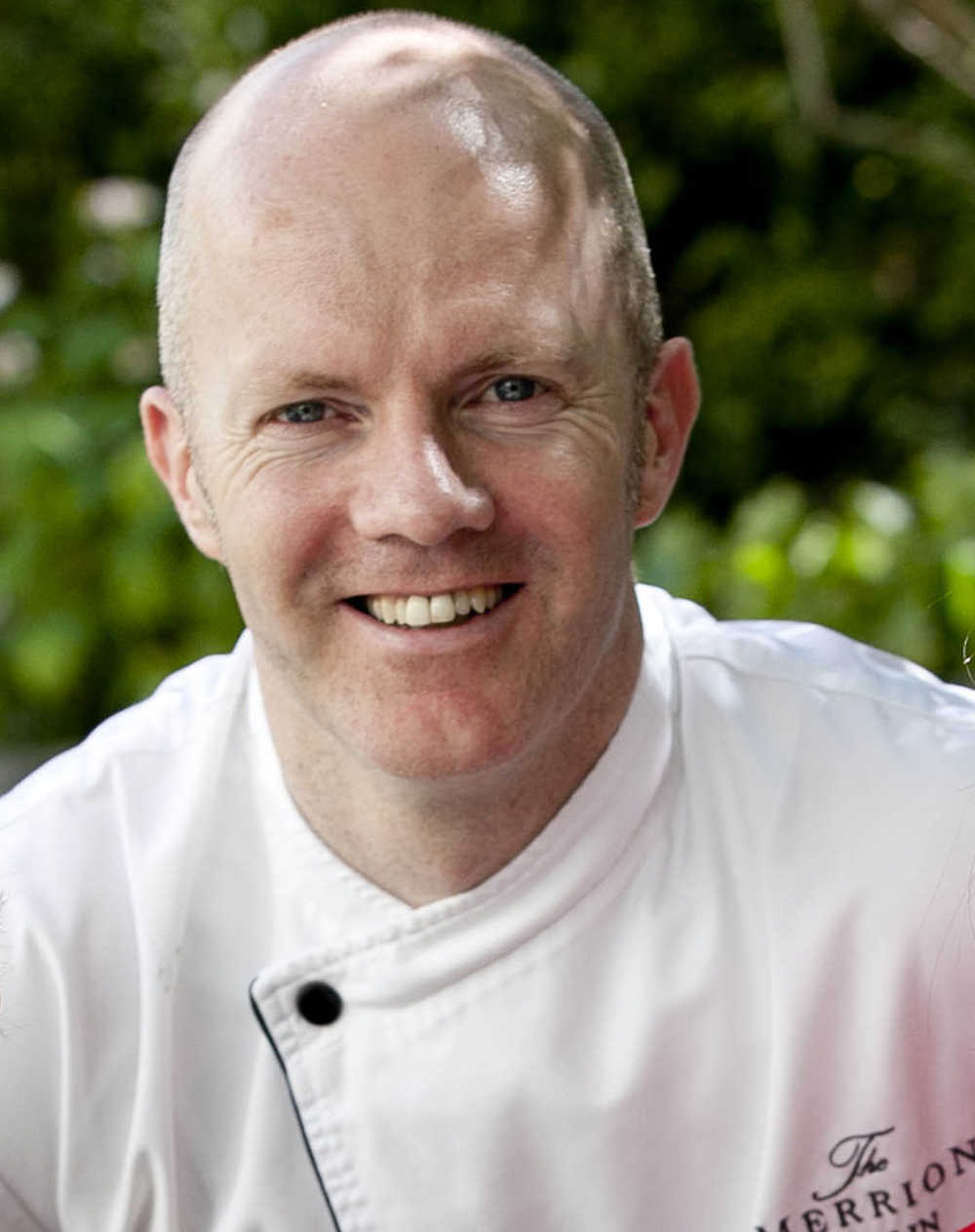
The high numbers demonstrate our growing appreciation for the art of pastry, a view shared by Paul Kelly at the five-star Merrion Hotel, where the lavish Art Tea afternoon tea is a best selling experience. Best known as a judge on The Great Irish Bake Off, Wexford-born Paul agrees that pastry chefs are unsung heroes. “I would love to see the day when people go into a restaurant or hotel here because they know so-and-so is the pastry chef and they want to taste their signature tart or soufflé because they’ve heard so much about it.”
When Paul started out there was no such thing as a pastry chef in Ireland. “No one wanted to do it,” he recalls. “It was too technical. Weighing up was a hassle, equipment was a hassle and the knowledge behind it was a hassle. It was always someone who had no idea what they were doing put into the corner of a kitchen and expected to produce something nice.”
Paul found his calling by accident while working in the Park Hotel Kenmare. “For my fourth and final season I was asked if I’d come back as a pastry chef and I thought it would be nice to give it a go. It was probably one of the toughest transitions ever, from the hot kitchen to pastry where everything had to be weighed precisely and presentation was massively involved.”
In Europe a pastry chef is a seriously respected profession and Paul looks to the continent, especially France, for trends and inspiration. “They’re like gods out there! They go through a long period of training specific to pastry and nothing else. It’s tough getting to the top but you can really establish yourself over there and you’re so well respected, both by peers and the public.”
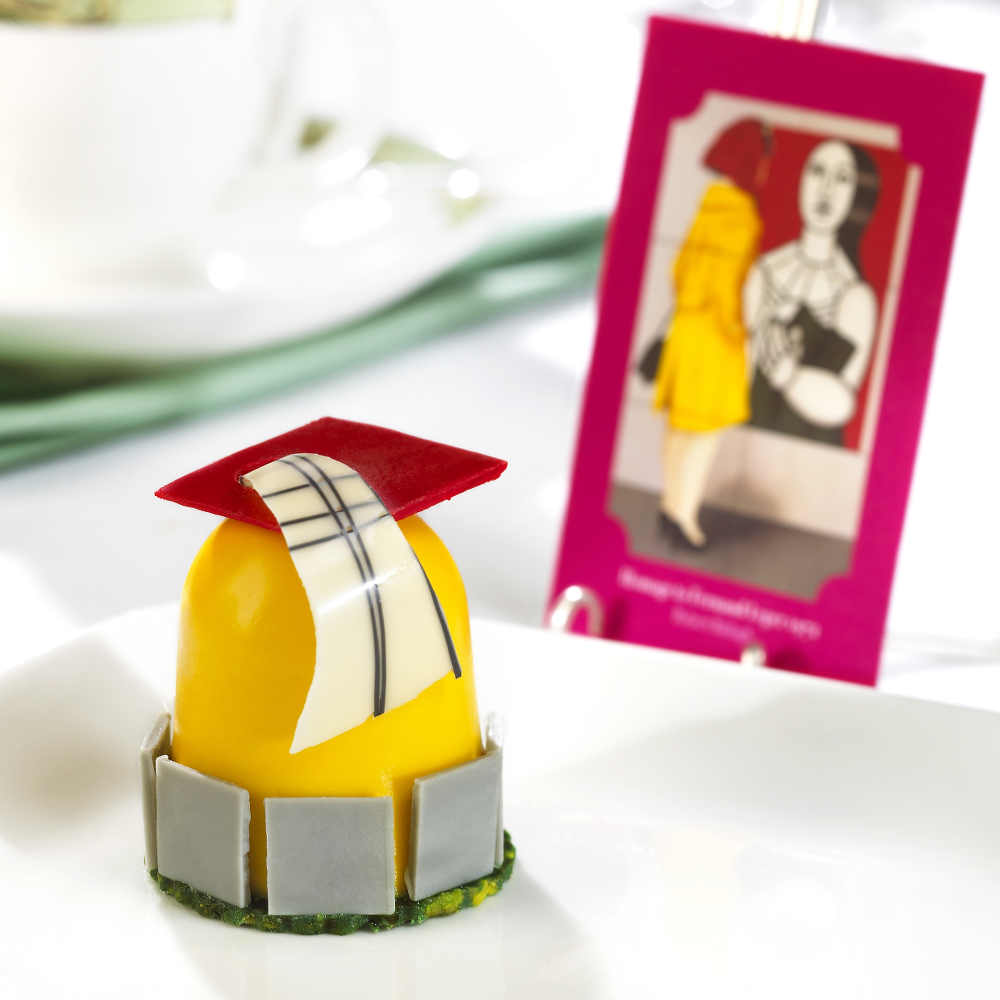
In Ireland we may have favourite bakeries and cafés but we’ve never really embraced the idea of an amazing patisserie and Paul Kelly is the closest thing we have to a celebrity pastry chef. We do, however, love our cakes, pastries and desserts.
Everywhere from Chapter One to Campagne, L’Ecrivain to Luna and OX to The Greenhouse you’ll find gifted pastry chefs, but will we ever get to the stage where we know their names? “I hope so,” admits Katie, who is keen to state how important her whole team is. “It is nice to get some recognition but I think pastry chefs are quieter by nature, always tucked away in the background working hard.”
--

Jillian Bolger is an award-winning editor and journalist specialising in food and travel writing. A member of the Irish Food Writers’ Guild and former editor of Food & Wine magazine (1999-2003,) she writes for The Irish Independent, Image, Food & Wine Magazine, Image Interiors and The Herald and is editor of Irish Brides magazine. She has worked with Georgina Campbell’s ireland-guide.com since 2008 years and is the Dublin Editor. Jillian has won several awards for her travel writing and holds an honours degree in the Arts. Her love of travel has seen her live in Australia, Sri Lanka, the USA and Germany. She lives in Dublin with her husband and three young children. Follow her on Twitter at @JillianBolger
The Jillian Bolger Column - Restaurant Websites

JILLIAN BOLGER wonders why so many restaurants’ websites let them down.
Remember the last time you went online to google a restaurant? Do you recall what information you were looking for? Maybe you wanted to learn more about somewhere new or to check the address, opening hours or make a booking. Perhaps you wanted to browse the menus to decide if the food would appeal to everyone, or whether it was within budget.
If these seem like straightforward reasons to visit a restaurant’s website then you’d have to wonder why so many establishments can’t get the basics right. If there’s one thing worse than having no website (and plenty of places still don’t), it’s having a poorly designed one with out-dated information and terrible photos.
In essence, a website is a shop window, whether it’s for a doctor, butcher or café. It conveys a sense of who you are, how you operate and connects you to would-be customers, as well as providing useful information. If a restaurant is going to make an effort with its décor, and branding then it makes sense to extend that effort to the internet.
How many times have you stared blankly at a restaurant’s home page, wondering where on earth it’s located? Sure, you’ve scrolled to the bottom, looking for the address in vain, before clicking the Contact button, certain it’s going to be revealed here. Congratulations, you’ve now found the email address and phone number but you still don’t know how to get to where you’re going.
So, if the address isn’t deemed important enough to be on the restaurant’s home page or listed in the Contact tab, where on earth do you suppose it’s hidden? Ah – in the About Us section. Of course! So obvious, really. Except it’s not.
Next to hidden addresses it’s ridiculous how many places forget to tell you when they open and close. And those that do include their hours frequently bury them behind random tabs. Some cram their sites with so many videos, links and marketing gimmicks that the pertinent information is frustratingly elusive. I can’t be the only one who doesn’t want pop-up windows, Muzak or a short film about the chef’s ethos. I’m here to get information, not play treasure hunt.
And how many websites cheekily feature recommendations pulled from ridiculously old restaurant reviews? One well-known Dublin restaurant’s website still highlights a quote from a favourable review that ran in The Sunday Tribune. For those of you who don’t recall, The Tribune folded in 2011.
Even the good restaurants have problems – namely keeping their websites updated. Not having a mobile-friendly website is a failing too. There are few things more annoying than scrolling across wide pages on a phone screen when all you want to do is see if they take bookings. And what’s the deal with PDF menus? Do we really need to download a document to our phone just to see what you’re serving for lunch?
I get that setting up and running a restaurant is expensive and there may be no money left for a web designer. Then there’s the problem of staff finding time to update the content and menus. But websites and social media are a necessary evil for today’s trade and restaurants need to treat them as key assets.
I may not have time to click on all the bells and whistles some places add to their websites, but I’m unlikely to complain if they don’t get between me and my quest for acquiring basic information.
In an ideal world all restaurant websites would be like Etto’s – pared back and minimalist yet telling customers everything they need to know on the home page. If a small place like this can get it so right then there’s no excuse for anyone else.
This article first appeared in Food & Wine Magazine and is reproduced with their kind permission. www.foodandwinemagazine.ie
--

Jillian Bolger is an award-winning editor and journalist specialising in food and travel writing. A member of the Irish Food Writers’ Guild and former editor of Food & Wine magazine (1999-2003,) she writes for The Irish Independent, Image, Food & Wine Magazine, Image Interiors and The Herald and is editor of Irish Brides magazine. She has worked with Georgina Campbell’s ireland-guide.com since 2008 years and is the Dublin Editor. Jillian has won several awards for her travel writing and holds an honours degree in the Arts. Her love of travel has seen her live in Australia, Sri Lanka, the USA and Germany. She lives in Dublin with her husband and three young children. Follow her on Twitter at @JillianBolger
The Jillian Bolger Column - Obesity

Never afraid to speak her mind, our intrepid columnist JILLIAN BOLGER says bluntly that if we want to get to the bottom of the obesity problem there's no point in blaming restaurants. The problem - and its solution - lies a lot closer to home. And this month's column is aimed squarely at parents.
As a parent, food writer and restaurant reviewer I have a keen interest in healthy eating. The legislation to include calories on restaurant menus might seem like a good response to the obesity epidemic, but it's not really addressing the root cause.
With almost two out of every three adults, and one in four children, in Ireland overweight or obese calories on menus might help serial offenders think twice about ordering the fattiest, most calorie-laden dishes on a menu. However the fact remains that most kids don't get fat in restaurants or cafes – they get fat at home.
It's not fair to lump the blame at the door of the take-away and fast food outlets either, although they do play a part. A dial-a-pizza dinner, or burger and chips combo is going to pack more saturated fats and calories than a home-cooked Shepherd's pie or bowl of spaghetti bolognaise, but not many families could afford to feed their kids on a daily diet of chipper and pizza deliveries, even if they wanted to.
The obesity problem starts at home, stemming from a diet of highly processed foods, which lack nutrients and are frequently loaded with saturated and hydrogenated fats, high sodium and sugar content, as well as artificial additives.
We're talking about chicken nuggets, frozen pizza, microwave dinners, sugary breakfast cereals, jars of cooking sauce, cheap sausages, even white bread. Chicken nuggets or goujons, are surprisingly simple to make at home with flour, eggs, breadcrumbs and chicken fillets, yet that can seem like a step too far for so many. A grilled chicken breast is less work; it can be cooked as quickly as the shop-bought frozen nuggets and is infinitely better and tastier.
If your kids are showing signs of being overweight you need to take a long look at yourself and your shopping habits. If your child is in primary school then you are fully responsible for what they eat and how they eat.
You can try offloading the blame, like arguing that you can't control how they snack when you're not there, but the fact is that good eating begins at home.
If you're loading up your trolley with snacks, fizzy drinks and processed meals weekly then you are placing temptation in your children's way and leaving them open to putting on weight. You may defend your practice by arguing that A, you can't cook; B, it's cheaper to buy convenience food than make fresh food; or, C, you are too pressed for time to cook from scratch, but to defend your choices is to kid yourself and do your children a disservice.
Convenience food makes a poor choice, especially for growing kids, and a diet of ready meals supplemented with weekend take-aways is irresponsible and likely to contribute to weight gain. Fill your shopping trolley with crisps, fizzy drinks and biscuits and you're doubling the chances of your kids piling on additional pounds.
The good news is that it's never too late to set your family on a healthier path. You, as a family shopper, have the power to steer your children away from obesity issues. Rather than terrify them by announcing a strict new health regime, start with small, gradual changes, like replacing processed cereals with porridge.
Learn to cook simple things like oven wedges instead of deep-fried chips and foolproof recipes like vegetable soup (unbelievably simple, cheap and so nourishing). If you still believe that convenience food is cheaper than fresh ingredients take inspiration from www.wholesomeireland.com, a blog by an Irish mum who lost her job during the recession and had to feed her family on a dwindling budget. In the battle of the bulge knowledge really is power, but first you may just need to accept that you are part of the problem.
--
 Jillian Bolger is an award-winning editor and journalist specialising in food and travel writing. A member of the Irish Food Writers’ Guild and former editor of Food & Wine magazine (1999-2003,) she writes for The Irish Independent, Image, Food & Wine Magazine, Image Interiors and The Herald and is editor of Irish Brides magazine. She has worked with Georgina Campbell’s ireland-guide.com since 2008 years and is the Dublin Editor. Jillian has won several awards for her travel writing and holds an honours degree in the Arts. Her love of travel has seen her live in Australia, Sri Lanka, the USA and Germany. She lives in Dublin with her husband and three young children. Follow her on Twitter at @JillianBolger
Jillian Bolger is an award-winning editor and journalist specialising in food and travel writing. A member of the Irish Food Writers’ Guild and former editor of Food & Wine magazine (1999-2003,) she writes for The Irish Independent, Image, Food & Wine Magazine, Image Interiors and The Herald and is editor of Irish Brides magazine. She has worked with Georgina Campbell’s ireland-guide.com since 2008 years and is the Dublin Editor. Jillian has won several awards for her travel writing and holds an honours degree in the Arts. Her love of travel has seen her live in Australia, Sri Lanka, the USA and Germany. She lives in Dublin with her husband and three young children. Follow her on Twitter at @JillianBolger
Show me all Article


